24 February 2025
![]() 7 mins Read
7 mins Read
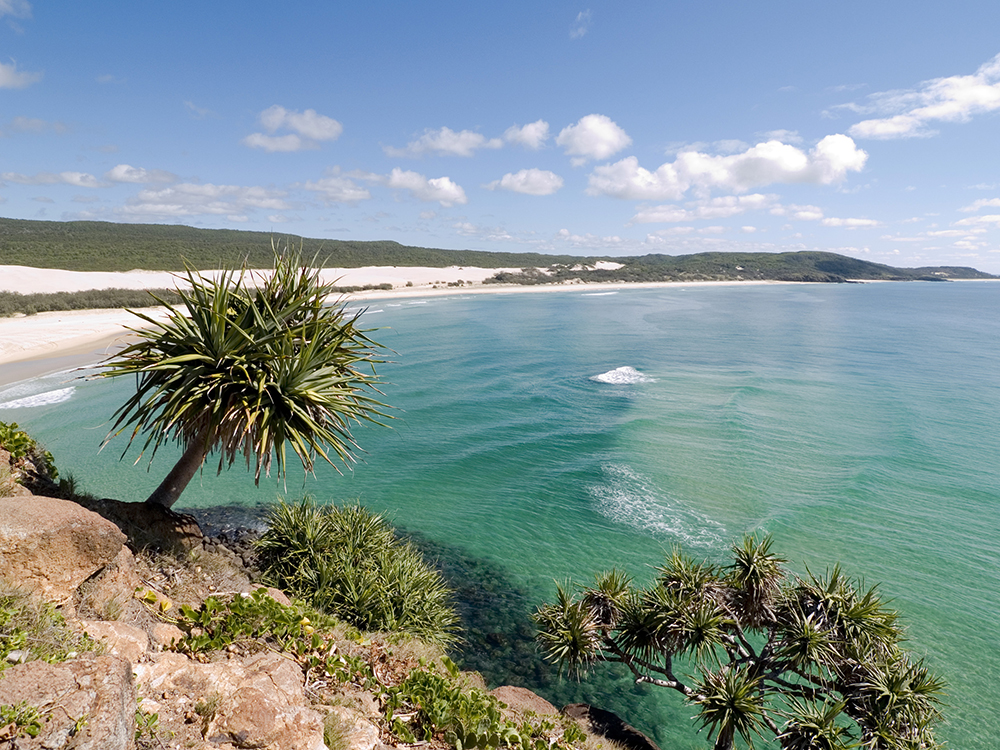
Stand atop Indian Head overlooking the white 75 Mile Beach and roiling surface of the sea and you will almost certainly feel a deeper connection to Australia’s past.
Whether you want your days here to synch with the rhythm of the sea and enjoy some aquatic exploration near the coastline marked by the cliffs of coloured sand, or to follow the undulations of the shoreline, a visit to K’gari usually involves some sort of physical activity and connection with nature and Indigenous culture.
Here are 10 things to do on K’gari, which the local Butchulla tribe appropriately called K’gari (paradise). And if you still want more tips, let the experts guide you on one of our pick of top K’gari tours.
Fraser Island is the only place in the world where rainforest is found growing on sand dunes at elevations of more than 200 metres.
The low-lying shrubs and heaths on the island are of great evolutionary and ecological significance as they make up the most complete age sequence of coastal dune systems anywhere in the world.
The diverse vegetation on the 184,000-hectare island also includes towering kauri pine and piccabeen palms, flora-rich shrubland and heath and subtropical rainforest. Don’t miss: The magnificent wildflower displays in spring and summer on the island, which is about three and a half hours’ drive north of Brisbane.
Sit and watch the way young children approach Lake McKenzie: they advance at speed, arms pinwheeling, and propel their body into the water again and again. This is the way to do it.
The white sandy beach tinged with a turquoise swirl of water is one of the most visited natural wonders in Australia.
Lake McKenzie is a ‘perched’ lake, meaning it contains only rainwater, and it is set into the landscape like a precious stone.
The crowds that converge around the lake make this a top spot for people-watching. Choose your tribe: dreadlocked hippies sitting in the shade of a eucalyptus tree; flashpackers with their selfie sticks prodding the sky; and families advancing and retreating from the water.
The lake is accessible by 4WD or by foot on a 20 km return loop trail from Kingfisher Bay Resort.
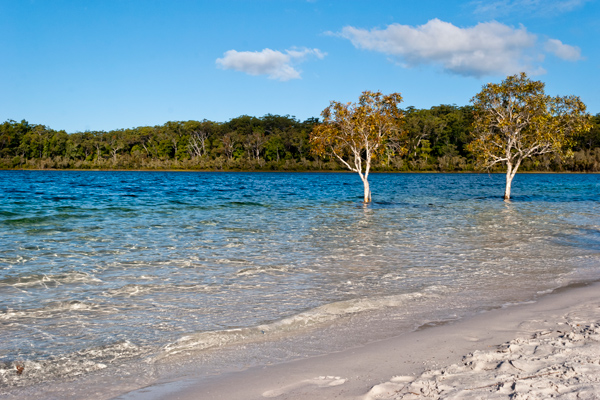
Lake McKenzie is arguably K’gari’s most photographed spot
Located on the eastern side of K’gari, Indian Head is a rocky outcrop said to have been originally created by volcanic activity up to 80 million years ago.
Captain Cook first caught sight of the Butchulla people in 1770 and named the eastern beach after them; the term ‘Indian’ was used to describe Indigenous people centuries ago.
Known to the local Indigenous people as tuckee (stone), the distinctive Indian head shape of the rocky cliffs made it one of K’gari’s most notable attractions.
It’s both an iconic landmark and a natural lookout for spotting sea life: look out over the ocean for manta rays, dolphins, sea turtles and pods of whales.
Indian Head on K’gari Queensland
These cliffs of coloured sands are permanently stained in various shades of rust and ochre and are one of many sacred sites on the island for the local Butchulla people.
According to Dreamtime legend, the cliffs were formed long ago as a result of a love story gone wrong.
Watching The Cathedrals change colour as the sun moves across the sky and the first rays of dawn paint the pinnacles is like watching the final touches being applied to an artwork.
Over time, the elements have clawed at the cliffs and resulted in this breathtaking construction.
The water in the Champagne Pools is a shade of bluey green that seems artificially altered. It is a series of pools, hemmed in by rocks, polished smooth by the sea.
Our recommendation for visitors to this spot is to forgo the giant inflatable unicorn — which appears quite jarring in this pristine environment — and to just head to the place with swimmers and a beach towel.
The thing to do here at the pools is nothing. Just lie there and float and look up at the sky curdled with clouds. As each wave crashes into the sandy-bottomed swimming pools, the water fizzes and bubbles like Champagne.
The pools are about 2.2km north along the beach from Indian Head. Go at low tide when the sea is calm.

This spectacular stretch of sand that traces the eastern side of K’gari is officially a national highway and one of the few beaches in the world where light aircraft can actually land and take off.
It is a hint of the size of the island – it is more than 120 km long – that has become an ecotourism destination.
There is nothing showy about this beach, but with the blue of the sky enamelled on, it’s a great place to pass a few hours or to carve off a trail to places such as Eli Creek, the largest freshwater creek along the East Coast (it pumps about 4.2 million litres of water into the ocean every hour).
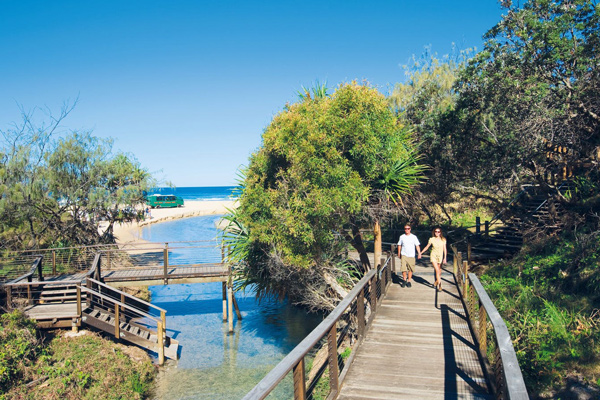
The crystal clear waters and walk-way of Eli Creek
The SS Maheno is a beacon for visitors to K’gari because it’s a bit of lingering evidence of history: a cyclone devastated parts of the Queensland coast in 1935.
The ship was on its way to a Japanese shipyard to be turned into scrap metal when its tow line snapped; it is now better known for being washed ashore on Fraser’s Eastern beach than for being the fastest ship to cross the Tasman between Australia and New Zealand.
Formerly a World War I hospital ship, the skeleton of the SS Maheno has a broken hull that looks like cracked ribs and it’s worth seeing, especially with that backdrop of dunes and tangled trees.
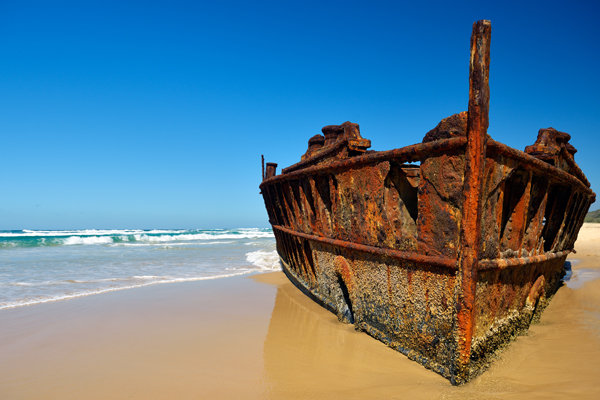
The SS Maheno is a beacon for visitors to K’gari
There are trees with outstretched branches forming archways as you make your way down the path toward Lake Wabby, another popular freshwater lake on K’gari.
K’gari has carved out a bit of a niche on the backpacker circuit and you will likely be joined by a transient population of visitors who make the 45-minute hike to the island’s deepest lake for a dip.
The lake has a distinct half-moon shape and it is both a window lake (formed when the ground level falls below the water table) and a barrage lake (when a sand blow blocks the waters of a natural spring). The lake is slowly being swallowed by a giant sand dune.
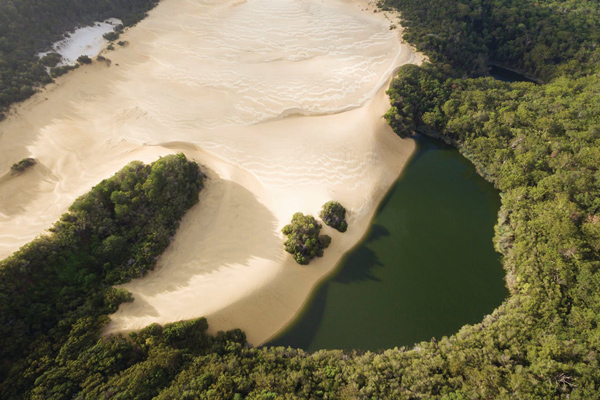
Bring your picnic blankets and boogie boards to Lake Wabby
Central Station was originally home to a community of more than 100 people during its days as a forestry camp when timber logging was the thing here in the 1920s. Thankfully, chainsaws are a thing of the past on World Heritage-listed K’gari.
Lace up your boots for a walk along the boardwalk that hugs the curves of Wanggoolba Creek as it snakes through the rainforest.
The creek was used for Secret Women’s Business before the land was cleared for forestry operations. These days, the picnic area sits amid a botanical garden.
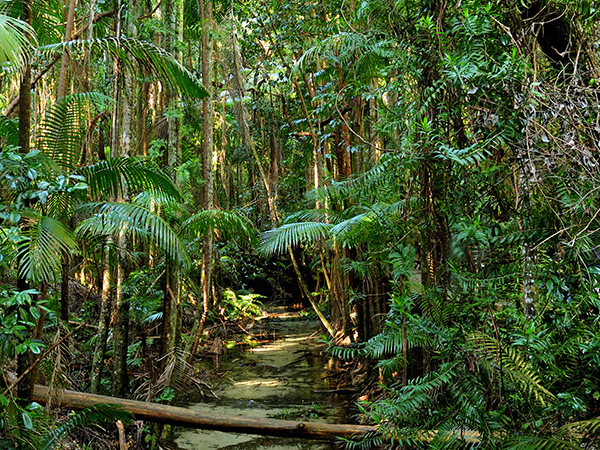
The rainforest curves of Wanggoolba Creek
The original inhabitants of K’gari were the Butchulla people, who occupied the land for about 5000 years. There are around 500 Indigenous archaeological sites located across K’gari, which are rich with Dreamtime stories.
It is also equipped with ingredients from the original Indigenous pantry. You can taste some of these native Australian flavours during a Bush Tucker Talk + Taste session at Kingfisher Bay Resort’s signature Seabelle Restaurant. Try a series of native ingredients and learn how to incorporate them into contemporary Australian cuisine and see how the powder inside the paperbark tree is used for medicinal purposes.
LEAVE YOUR COMMENT